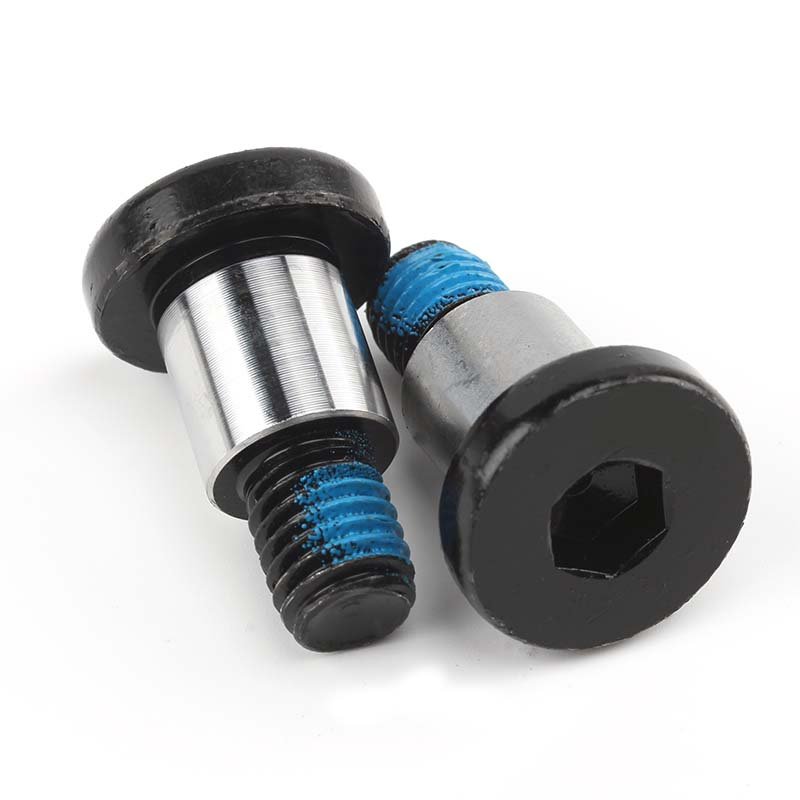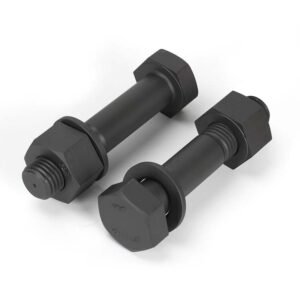Electrophoretic Coating in Carbon Steel Fasteners
Electrophoretic Coating in Carbon Steel Fasteners
Electrophoretic coating, often known as e-coating, is a highly effective surface treatment used in the fastener industry, particularly with carbon steel materials. This advanced process ensures superior anti-corrosive properties, adhesion, and surface uniformity, making it ideal for various industries and applications.
Overview of Electrophoretic Coating
Definition
Electrophoretic coating is a surface finishing process where electrically charged particles suspended in a liquid medium are deposited onto an oppositely charged conductive part. Once the deposition is complete, the coated item is heat-cured to form a protective and decorative film. This coating results in a uniform, durable, and corrosion-resistant surface.
Technical Background
This technology dates back several decades and became popular in the automotive and heavy machinery industries due to its consistent film thickness and cost-effectiveness. In fastener manufacturing, it has gained traction due to its superior coverage even on complex geometries and recessed areas.
Common Applications and Scope
Suitable Fastener Types
Electrophoretic coating is applicable to a wide array of carbon steel fasteners, including:
| Fastener Type | Applicability |
|---|---|
| Bolts | Yes |
| Nuts | Yes |
| Screws | Yes |
| Self-tapping screws | Yes |
| Rivets | Yes |
Industry Usage
| Industry | Application Example |
|---|---|
| Automotive | Chassis and suspension components |
| Construction | Structural connectors and joints |
| Electronics | Circuit board fasteners requiring insulation |
| Aerospace | Corrosion-resistant components |
| Industrial Machinery | High-wear fastener applications |
Performance Characteristics of Electrophoretic Coating
Corrosion Resistance
E-coating significantly enhances resistance to salt-spray and humid environments, making it a preferred choice for parts exposed to outdoor or harsh conditions.
Aesthetic Finish
The coating results in a smooth, black or gray finish with adjustable gloss levels. It ensures uniform film thickness even on complex shapes, ensuring both form and function.
Surface Hardness & Wear
Although not as hard as some thermal treatments, it adds a protective layer that improves surface wear and durability.
Conductivity & Insulation
Depending on the formulation, e-coating can either retain some conductivity or act as an insulative layer — especially important for electronic industry fasteners.
Electrophoretic Coating Process Flow
| Process Stage | Description |
|---|---|
| Pre-treatment | Degreasing, derusting, and cleaning to prepare the surface |
| Coating Application | Immersion in an electrophoretic tank with voltage application |
| Rinsing | Removal of excess coating material |
| Curing | Thermal curing at ~180°C to solidify the protective film |
| Post-treatment(Optional) | Additional sealing or top coating for enhanced protection |
Advantages and Disadvantages
Advantages
- Uniform coverage even on complex geometry
- Environmentally friendly: water-based, low VOC
- Excellent corrosion resistance
- High adhesion strength
- Good compatibility with other coatings
Disadvantages
- Requires high initial investment in equipment
- Needs conductive substrate (limiting to metal fasteners)
- Not suitable for extremely high-temperature applications
Comparative Analysis
| Feature | Electrophoretic Coating | Zinc Electroplating | Phosphate Coating |
|---|---|---|---|
| Corrosion Resistance | Excellent | Moderate | Good |
| Surface Uniformity | High | Moderate | Low |
| Aesthetic Appearance | Smooth, consistent | Metallic shine | Dull, matte |
| Environmental Safety | High | Depends on type | Moderate |
Compliance and Standards
Electrophoretic coatings often comply with standards like:
- ISO 12944 (for corrosion protection)
- ASTM B117 (salt spray testing)
- RoHS (Restriction of Hazardous Substances Directive)
- ISO 2081 (electroplated coatings)
Environmental and Safety Considerations
E-coating is considered environmentally sustainable, using water-based systems and significantly reducing hazardous emissions. Many formulations are RoHS and REACH compliant and exclude toxic substances like hexavalent chromium.
Worker safety is ensured by closed-cycle systems and automated production processes, minimizing direct chemical exposure.
Cost and Economical Evaluation
Electrophoretic coating offers a substantial return on investment:
| Category | Notes |
|---|---|
| Equipment Investment | High initial cost |
| Per-Unit Cost | Competitive for large-volume production |
| Maintenance | Low due to automated baths and filters |
| Total Value | High performance-to-cost ratio |
Summary and Company Introduction
At Flybear Fastener, we recognize the importance of advanced surface treatment technologies like electrophoretic coating in delivering superior corrosion resistance and durability in carbon steel fasteners. Backed by decades of experience and a commitment to excellence, we provide a wide range of high-qualityfastener products and comprehensive industry solutions tailored to your specific needs.
We pride ourselves on our motto, “Quality First, Customer Supreme.” Whether you are in automotive, construction, or electronics, our team is here to deliver optimal fastening performance. Please don’t hesitate to contact us for more details, pricing, or customized solutions.








